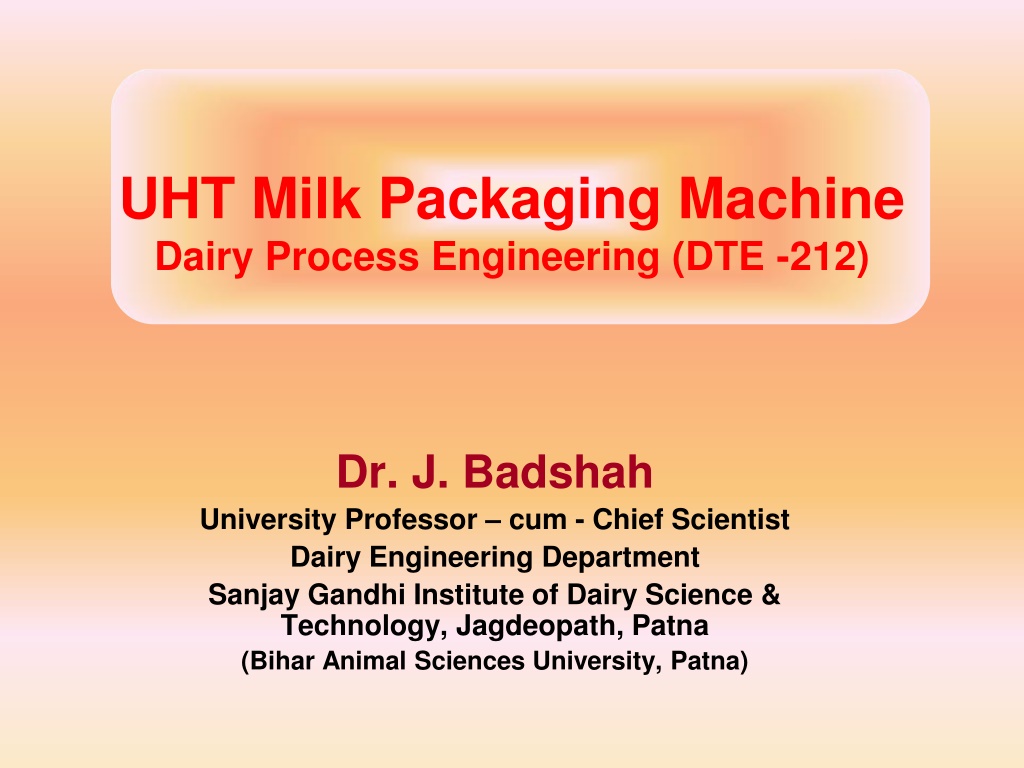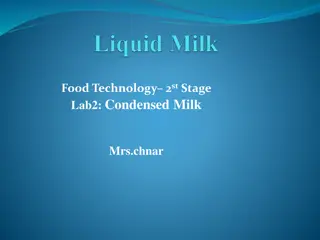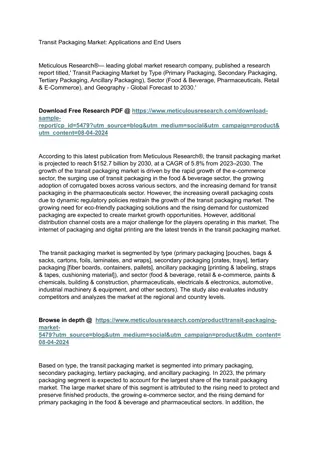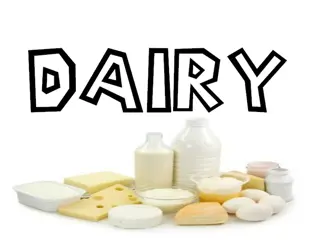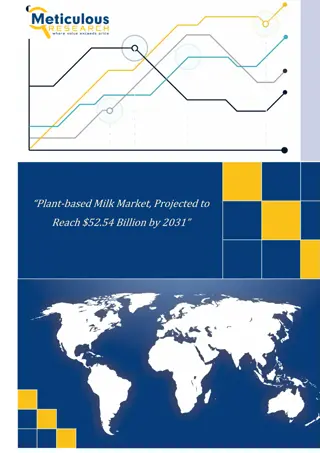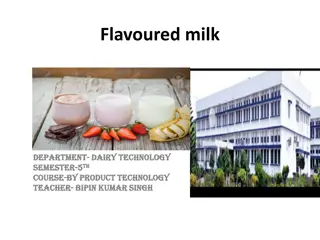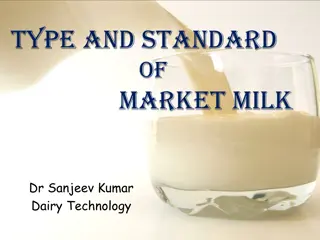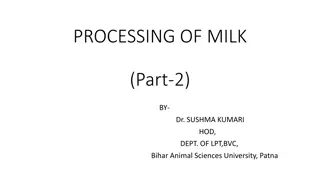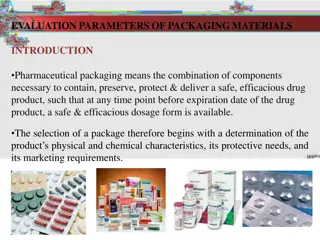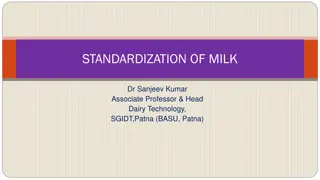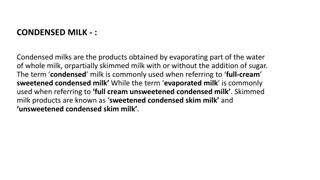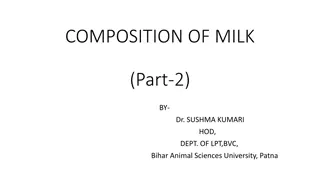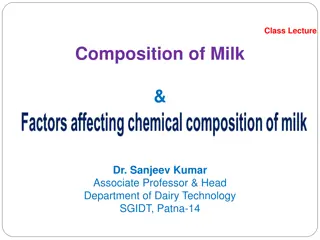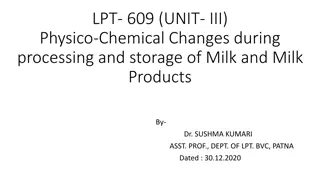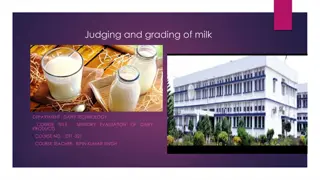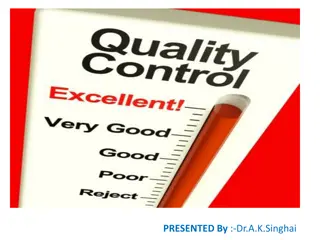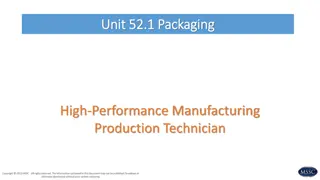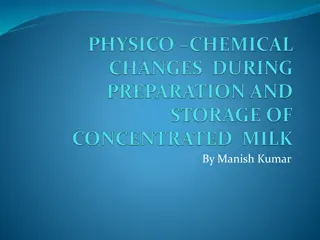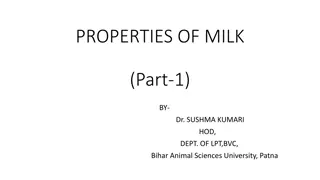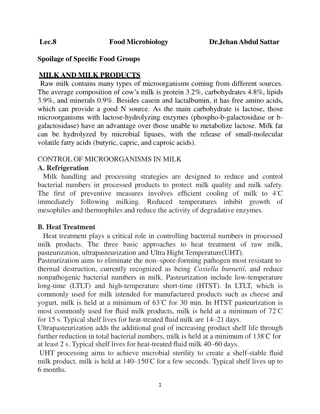UHT Milk Packaging Machine and Process Engineering Overview
UHT milk packaging machines like Tetra Brick Aseptic filling machines ensure aseptic conditions for packaging dairy products. These machines use multi-layered packaging material and feature components like ASU unit for continuous production, Strip Applicator to prevent product contamination, and peroxide bath for sterilization before entering an aseptic chamber. The process involves sterilizing packaging material, filling it with product, shaping, cutting into individual packages, and drying in a controlled environment. These machines play a vital role in maintaining product quality and safety in dairy processing.
Download Presentation

Please find below an Image/Link to download the presentation.
The content on the website is provided AS IS for your information and personal use only. It may not be sold, licensed, or shared on other websites without obtaining consent from the author. Download presentation by click this link. If you encounter any issues during the download, it is possible that the publisher has removed the file from their server.
E N D
Presentation Transcript
UHT Milk Packaging Machine Dairy Process Engineering (DTE -212) Dr. J. Badshah University Professor cum - Chief Scientist Dairy Engineering Department Sanjay Gandhi Institute of Dairy Science & Technology, Jagdeopath, Patna (Bihar Animal Sciences University, Patna)
UHT Milk Packaging Machine This is different than the usual FFS machine in that the packaging material is multi layered, and the filling is done in an absolutely aseptic condition. The filling room is kept in a positive pressure, and the air inlet is through HEPA filters. Starting out from a reel of packaging material, the Tetra Brick Aseptic (TBA ) filling machine produces filled packages. The packaging material is first sterilized and then formed into a tube. The tube is filled with product and then shaped and cut into individual packages. In India, the commonly available Asceptic packaging machine is from Tetrapak company.
Tetra brik Aseptic (TBA)filling machine Tetra Brick filling machines are built from so called modules and may also equipment and accessories. ASU Automatic splicing unit (ASU): The automatic splicing unit splices reels of packaging material. This means that production can continue uninterrupted when one reel of packaging material comes to an end. During splicing though, the packaging material has to remain still in the splicing head. The magazine provides the necessary supply of material so that the machine does not have to stop. The PullTab unit is additional equipment, providing the packaging material with a PullTab opening before it enters the peroxide bath. The PullTab opening is created by punching a hole in the packaging material. The hole is sealed with plastic on the inside and aluminium on the have following additional
Strip Applicator The strip applicator applies a plastic strip, the LS-strip, along one edge of the packaging material. The strip is applied on the inside of the packaging material and is intended to prevent product from being soaked into the raw paper edge of the longitudinal seal. The strip will also support the seal. Only half of the LS- strip is sealed to this edge of the packaging material. The other half will be sealed to the other edge later, when the packaging material is formed into a tube.
Peroxide Bath The packaging material will be sterilized in the peroxide bath. The packaging material will be immersed into warm peroxide and both sides will be sterilized. In machines with shallow baths the inside of the packaging material will merely be covered with cold peroxide and the sterilization will be finished in the tube heater.
Aseptic Chamber The packaging material will be dried with heated air. An aseptic environment around the sterilized packaging material is maintained with an overpressure of heat- sterilized air. This takes place in the aseptic chamber. Machines with shallow baths, which have no aseptic chamber, heat-sterilized air will be blown into the tight tube. This way a sterile area is maintained where the tube is to be filled with product. The packaging material will be formed into a tube and sealed longitudinally. Finally, the tube will be filled with product.
Jaw System In the jaw system the tube is sealed transversally and cut into separate packages. The sealing is made by induction heating, using the aluminum in the packaging material to melt the plastic. It is important that the package design, with the creases, appear in accordance with the jaws. This is controlled and corrected by the jaw system.
Final Folder In the final folder the separate package gets its final shape. The fins are folded and the flaps are folded and sealed. Hot air is used to seal the flaps. The plastic outer coating on the package material is heated and the flaps are pressed against the sides and the bottom of the package. When the plastic gets cool the flap is sealed.
Operator Panel The operator panel allows the operator to communicate with the machine. It is used to start and stop or make the machine take any other action. In the electrical cabinet a great part of the electrical components are included, such as: Temperature regulators Control system Contactors Induction Heating unit, etc.
Service Unit Service unit: The service unit includes parts and supply systems needed for the machine function, for example: Water and air system Lubrication and hydraulic oil system Pneumatic and peroxide systems Drive system: The drive system includes motor, gear and cam. These parts run the jaw system and also the final folder on certain machines.
Package Terminology Creases are the folding instructions on the packaging material to ensure the Creases package s final shape. The longitudinal seal (LS) is accomplished when forming the packaging material seals into a tube. It seals the package along the side. A strip of laminated plastic, the LS-strip, covers the seal on the inside. The area of the overlap joint is called the longitudinal overlap. The transversal seal (TS) is made when the tube is filled with product. It seals the package at top and bottom. The sealing takes place below the product level in the tube. The fins are the areas, at top and bottom of the package, where it is sealed and Fins cut. The flaps would be the corners of the package, if you flattened it out. When Flaps shaping the package, the flaps are folded down and in, and then sealed to the package body.
